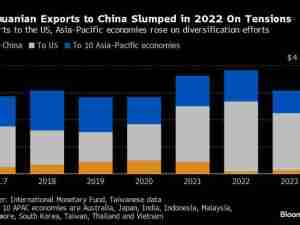Australia’s central bank isn’t yet worried about the risk of imported inflation from a falling currency as the depreciation to date has been narrowly based and modest, Assistant Governor Chris Kent said.
In trade-weighted terms, or against a basket of currencies, the local dollar has moved “broadly in line with its fundamental determinants,” Kent said in a speech in Sydney Monday. The Chinese renminbi has the highest weighting in Australia’s TWI.
“The TWI typically has a greater bearing on our imported inflation than any one bilateral rate,” Kent said. “The effect from the depreciation in the TWI that we have seen over the year to date of around 2% is estimated to be relatively modest,” he added.
Kent cited Reserve Bank models which suggest the level of the Consumer Price Index will increase by only around 0.2% in total over the course of a few years.
Australia’s currency has fallen 17% in the past six months against the dollar, reflecting the Federal Reserve’s ultra-aggressive policy tightening and expectations it will remain hawkish, as well as a weakening in commodity prices from highs immediately after Russia’s invasion of Ukraine.
While the RBA has raised rates by a hefty 2.5 percentage points since May, and further increases are expected, it this month broke ranks with global counterparts and moved to a smaller, quarter-percentage-point increase.
Kent said further rate hikes are likely “given the need to establish a more sustainable balance of demand and supply and in the face of a very tight labor market.”
The size and timing of hikes will depend on incoming data, including the response of household spending to the tightening in financial conditions that is still working its way through the system, Kent said.
Rate increases will also depend on the outlook for inflation and the labor market, he added. Australia will publish third-quarter CPI on Wednesday and economists expect it’s likely to show headline inflation hit a 32-year high of 7%.





